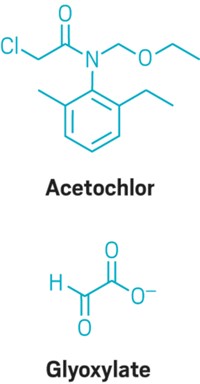Advertisement
Grab your lab coat. Let's get started
Welcome!
Welcome!
Create an account below to get 6 C&EN articles per month, receive newsletters and more - all free.
It seems this is your first time logging in online. Please enter the following information to continue.
As an ACS member you automatically get access to this site. All we need is few more details to create your reading experience.
Not you? Sign in with a different account.
Not you? Sign in with a different account.
ERROR 1
ERROR 1
ERROR 2
ERROR 2
ERROR 2
ERROR 2
ERROR 2
Password and Confirm password must match.
If you have an ACS member number, please enter it here so we can link this account to your membership. (optional)
ERROR 2
ACS values your privacy. By submitting your information, you are gaining access to C&EN and subscribing to our weekly newsletter. We use the information you provide to make your reading experience better, and we will never sell your data to third party members.
Drug Development
Reactions: Relation of diabetes research to covalent drugs, and defining sustainable growth
September 25, 2022
| A version of this story appeared in
Volume 100, Issue 34
Letters to the editor
Lessons from diabetes research
I found the article “Looking to Lysine” in the Aug. 29, 2022, issue (page 15) interesting and perplexing. I remember the days that pharmaceutical executives refused to consider “permanently bonding” drugs for fear of side effects. With a renewed interest in permanent bonding and lysine, I am surprised that the old diabetes literature has not been consulted.
With respect to lysine and N-terminal amines (both reasonable nucleophiles), there is a large set of literature in the diabetes area. The aldehyde glucose is normal in the blood of people without diabetes and elevated in that of people with diabetes. Glucose will form a Schiff base with lysines and N-terminal amines (Biochem. Biophys. Res. Commun. 1975, DOI: 10.1016/0006-291X(75)90289-2). While this is reversible, in water and over time, the Schiff base undergoes an Amadori rearrangement, resulting in a stable ketoamine. This reaction is the source of the relatively well-known clinical assay for hemoglobin A1c to evaluate diabetic control (J. Clin. Invest. 1976, DOI: 10.1172/JCI108436). This reaction is also the source for other glycosylated proteins in people with diabetes (Pract. Diabetes Int.2000, 17, 21; Clin. Ophthalmol. 2021, DOI: 10.2147/OPTH.S300242), which cause some symptoms (for example, circulatory problems and vision problems caused by the glycosylation of blood vessel basement membranes and eye proteins). It seems this old information could help those moving forward to use amine nucleophiles as a method of designing permanently bonded drugs. Since one target seems to be cancer cells, it might even be interesting to do an epidemiological evaluation of people with diabetes and cancer (World J. Diabetes 2020, DOI: 10.4239/wjd.v11.i6.227).
David N. Haney
La Jolla, California
Meaning of sustainable growth
I always cringe a little when I see the oxymoron sustainable growth appear in a news article. The most recent reference appeared in the subtitle on page 35 of the July 25, 2022, edition of C&EN: “Air pollution data are essential for sustainable growth.” As Rudy Baum used to say, perpetual growth is not possible on a finite planet. People that use this term should be obligated to describe the conditions under which growth can be sustainable. What does this mean? I equate the words sustainable growth with growth that can be maintained indefinitely (for example, till humans cease to exist as a species). In a science publication like C&EN, this term should not be allowed to be used glibly by a guest author without a foundation of facts to back it up.
Jim Schulte
Cicero, Illinois



Join the conversation
Contact the reporter
Submit a Letter to the Editor for publication
Engage with us on Twitter